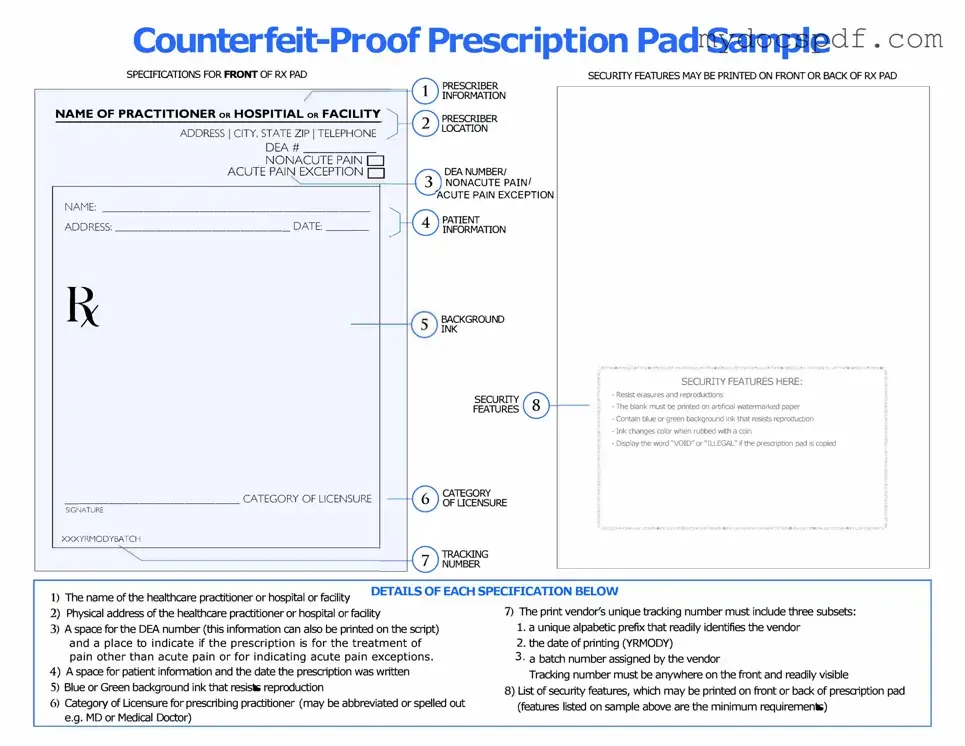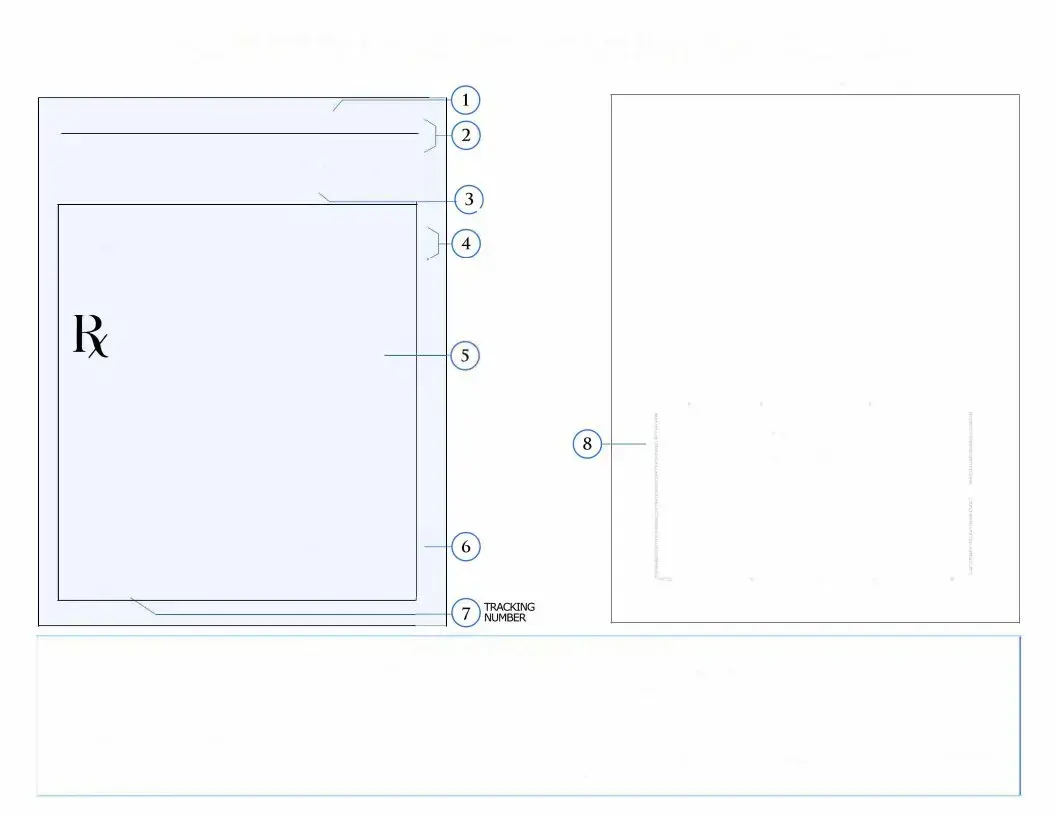The Prescription Pad form serves as a crucial tool in the healthcare landscape, streamlining the process of prescribing medication while ensuring patient safety and compliance with regulatory standards. This form typically includes essential information such as the patient's name, date of birth, and medication details, including dosage and administration instructions. By standardizing the prescription process, healthcare providers can minimize errors and enhance communication with pharmacies. Additionally, the form often incorporates sections for the prescriber’s information, allowing for easy verification of credentials and contact details. Its design may also include fields for refills, ensuring that patients have a clear understanding of their medication regimen. Ultimately, the Prescription Pad form is more than just a piece of paper; it represents a vital link between patients and their healthcare providers, fostering a relationship built on trust and clarity in medication management.

